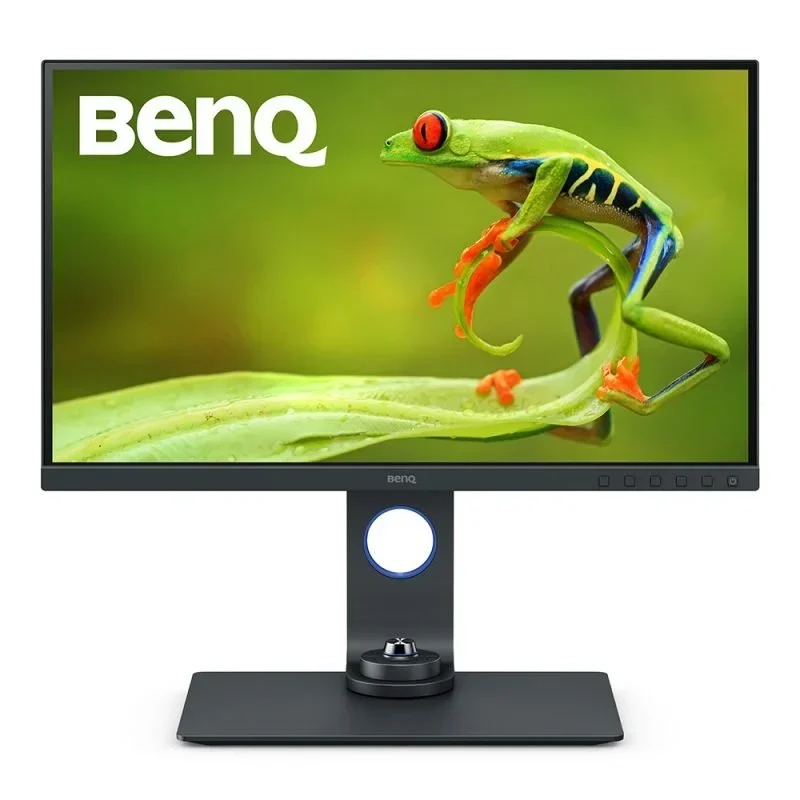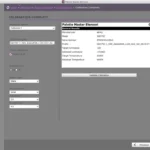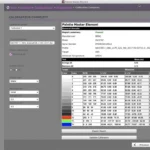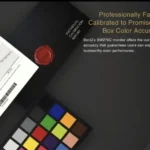BenQ SW270C monitor review
Introduction

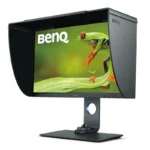
The new BenQ SW270C is an evolutionary exciting new monitor that offers modern updates for connectivity and workflow options for editing both stills images and HD video.
In this BenQ SW270C monitor review I will share some of its long list of features and options.
BenQ proves once again delivering a top-quality product with a better price point than any other competitor is their forte. Highly recommended for those seeking an updated USB-C or Thunderbolt enabled editing monitor with top level colour abilities for professional quality editing. If you are serious about your editing, viewing, and production of imagery be it video or stills all of the SW BenQ line monitors get you there faster. The SW270C is the perfect fit for budget aware demanding users. As an upgrade, replacement, or simply getting into professional quality displays the SW270C is a great choice!
This review is intended for image editors and content creators both stills and video. It is a review from a user’s point of view to other users looking for information on the use and application of this monitor and not intended to be a technical review, which are available from qualified technical writers. To be clear, in the past BenQ have graciously offered to keep monitors after reviewing them, I’ll be happy if the same is offered for this gem.
The refreshed BenQ SW270C is a step up from the SW2700 monitor quality and feature wise. My favourite stills monitor was the BenQ SW2700 (my review here) which was near perfect for photographers and videographers alike for anything other than 4K video production. For a larger display the best value in the market is still the SW320 a 32″ 4K monitor with the same colour characteristics as all the BenQ monitors including the SW270C. For my review click here BenQSW320.
BenQ SW270C has added new electronic features to allow USBC connectivity still maintaining certification with superior colour capacities for all common standards and recommendations. It easy to appreciate the convenience of USB C or Thunderbolt while developing all the hooks that go into a well done certified implementation is really a major task for any display maker. Being a PD (Power Delivery) cable you only need one cable to power a laptop and have USB, sound, display data etc with no other cables needed outside of monitor power.
The BenQ SW270C has very advanced functionality with a USB C connection giving 60W of power delivery. Furthermore, extended data rates (5Gb/s theoretical) offer faster transmission of data in all directions. This means much quicker calibrations are possible 3X as fast as previously. Refresh rates and options have been made possible with a much faster and powerful onboard processor.
Continuing the trend with BenQ SW monitors, the panel gamut maintains 100% of sRGB/ REC 709 and 99% of Adobe RGB. Targeting video, more importantly, DCI P3 conditions to be met are very well achieved.
There are some changes in available colour spaces, being LowBlue Light was removed.
Dicom was added, DCI P3, Display P3, M-book, and HDR a welcome addition.
The problem for most is the actual meaning of these spaces and what they can do for you.
Stating a percentage of a synthetic work space doesn’t say that much. Advertisers play on this yet it does not give the whole story. Where the extremities live, and the coordinates of these are plotted against the “standard” working spaces. Each monitor is different in what colours are inside or outside these standard spaces, yet you will have to look into this through profiles. It is fairly easy on Mac, Colorsync Utility, hold for comparison and choose another profile. The BenQ SW270C does just as well as all the other SW monitors which is no surprise. See the plots below. The grey frame is the SW270C.
Palette Master Elements
The good news is super rapid calibrations and profiling are now done with the i1 Display Pro, the fastest instrument out there. The bad news is the application has not been correctly updated, nor certified/optimised by Apple. It does not save customised settings, does not have trending although does save out an html report. Curiously profiles created with the same device are not only different built from other applications yet variations are noted especially with this monitor!
I am finding BenQ Palette Master calibrations are rendering slightly green compared to other monitors or profilers. Calibrating to 16bit LUTS should fetch the highest possible quality, yet PM falls short here with some crunching of dark areas. Overall grey ranges are smooth yet, a tad green albeit they validate in the reports as being within tolerance. I am still using it yet constantly comparing it to standard ICC profiles which are sometimes better.
Until there is an overhaul, I will say use whatever you like, test out your profilers, and go with that.
Colour Consistency BenQ SW270C
Colour consistency between multiple SW270C monitors has been assured, and the uniformity of each monitor is exceptional. I am delighted with the results of the new SW270C as far as uniformity goes. If anything, that was one of the only details separating BenQ (now called AQcolor) from the most expensive monitors. This is a factory measured value field reported delivered with each unit from BenQ. It is easy to check for uniformity. Take a window with a white background and slide this window around to all zones. You’d be surprised at how our eyes become used to differences in across the screen densities. The BenQ Sw270C is very good in both density and colour across the screen in real world visual tests and the factory measured report of each monitor.
The inclusion of M-book colour space which is Apple’s P3 lets you plug in a single cable USB C and match the bright contrasty look of the MacBook iPad etc on the (mat screen) BenQ SW270C. That is very nice indeed. Yet you can still choose to switch to a calibrated space saved into Cal 1,2, or 3.
Calibrations and profiles between all BenQ SW monitors is a joy. They are in all practical ways identical. Switching between monitors updating and upgrading gives you that bonus confidence in BenQ that your past present and future workflow is assured.
For some, only doing stills photography this makes investing in a capable monitor a wise long-term choice, as camera and editing applications including video support aligned with these colour spaces in mind.
Of course, any high-end monitor has more features than any one user will ever use. That is where I would like to point out the most usable and important features for the photography and video editing domain.
Cameras have been producing images with more colour than monitors can show for a long time. Monitors now are targeting Adobe RGB colour spaces as the reference point, with the goal of managing extraneous colour spaces such as DCI P3 well managed.
Apple decided on a wide gamut device space called Display P3. This is similar to Adobe RGB yet with different coordinates. Both are fine for editing. The advantage with the SW line is being able to move between all colour spaces with ease and assurance.
Physical dimensions are what many users are expecting and comfortable with. The BenQ SW270C monitor is well paired for a standard desktop space and viewing distance. I run mine with a dual monitor setup 27” iMac 5K.
A laptop and a BenQ SW270C will make for an ideal editing setup. The BenQ SW270C is heavier than the SW2700 yet light enough to use as a studio reference monitor. With a good laptop one is all set for all sorts of studio situations. With the addition portrait mode all bases are covered.
The dilemma of choosing a 4K or HD monitor is still there. For example if you like to be close to the monitor(s) a standard HD monitor as the SW270C is would be your choice. All 4K monitors have you further away for a reasonable viewing distance. I am finding the text on the SW270C very sharp, only being a touch crisper on my iMac 27” 5K. It also comes down to how the OS manages text on above HD. Apple does this well on their Retina monitors. For any monitor plugged in that is managed by the system Mac or Windows text rendering is somewhere between acceptable and good. To my eyes great has not yet happened in text scaling at the operating level for external monitors.
For editing images, I find the operating systems run smoother with HD monitors regardless of video card. Hence my recommendation for stills or non 4K video you’ll be happier with this monitor over a 4K such as the excellent BenQ SW271. For those who want to see the very finest details in stills the 4K version is for you.
While most editing computers since 2012 are capable of delivering 4K video output signal not all can drive this at 10 bits per channel (over HDMI 2.0 or Display Port).
Mac is simple to send out 10 bit per channel data from the video card. You can look under the Apple icon top left, About This Mac>System report…> Graphics/Displays and check your
Frame Buffer Depth. If it is 30 bits you are in 10bit data.
Windows is more complicated. You’ll need 10 bits in Open GL, as Adobe apps require it. Thus video cards like the Quadro and Geforce. Other cards may or not have 10 bit in OpenGL.
With the addition of USB C much more data can be sent. One of the biggest advantages of the SW270C is the supplied high-quality cable functions for all data including the USB hub, card reader, 10 bit workflow and sound etc. Time required for calibration is reduced by 3 thanks to USB C. I am not sure why but the specifications page notes the USB C cable as optional, and in the manual, it states cables are supplied according to localisation. In Europe this cable is supplied.
Implementation by Apple with Thunderbolt 3/ USB C is unfortunately problematic. There are some delays on wake up, some applications are not as fluid as with an HDMI or DP connection. One thing to note: Turn on USB-C Awake to On as it is by default set to Off.
As good as an iMac is, the BenQ SW270C has a superb mat screen, and although the Apple specs are similar the viewing angles specifications it is readily apparent that the BenQ really outperforms any glossy screen at extreme angles. Uniformity is superb on the SW270C, beyond my expectations, and truly a top-level panel.
When clients are present, the undeniable repeatability and viewing angle comfort of the BenQ SW270C will prove its worth. With the improved uniformity there are no coloration zones.
As photographers, we are drawn to video more and more. Not long ago video editing was a specialised domain reserved for mid-sized companies with experts in editing with very expensive equipment required to do so.
Now, the requirements have become in reach of independent artists and content creators making high quality video editing a reality with a smaller investment in equipment as well as training. Yet delivery of content needs a reliable editing post where the monitor is the portal into the visual world we are working with.
BenQ addresses the needs by aligning colour display to your workflow needs both video and stills.
While editing video simply set your BenQ SW270C space to the same as your editing application and have an assurance of predicable and accurate colour. Typically, this will be Rec709. This is not to say a display will replace a reference monitor (in terms of video reference monitors certified for various broadcast standards). It will however assure colour coordination and workflow in editing will be maintained.
BenQ SW270C is CalMan Certified and Pantone, which are outsourced colour certification programs that measures the ability to meet or exceed a standard set of controls such as white point, gamut, contrast and brightness colour space accuracy. Basically, it means the BenQ SW270C will easily maintain great fidelity between watching movies, targeting press output, or any other applications you use.
Pantone Certification is a plus on BenQ’s side. It doesn’t change the colours you have on the monitor yet has a validation of the Pantone Swatch colours being able to accurately render their colours for designers, graphic designers. Making a polyvalent monitor for such a low price puts BenQ ahead of others.
Often reviews lists specifications without describing what that could mean for the user. I will try to explain some here.
Colour Depth
Bits per channel and bit depth are “Colour depth” also known as bit depth, is either the number of bits used to indicate the colour levels of a single pixel, in a bitmapped image or video frame buffer, or the number of bits used for each colour component of a single pixel. To be able to supply a video out signal at the potential of billions of colours you need ten bits per channel, which is actually the requirements of UHD Premium and DCI P3. What does this mean to an end user? Well to have slightly more precision in colour fidelity 10bits per channel allows this.
The other number is 16bit LUTs. This is the higher precision information for which the 10bit data is relayed through for signal processing. This higher precision basically gives more room for correcting errors that would occur with lower bit precision. This is to say less banding, better gamma, minimum black point fine highlight control, on the monitor side internally. To recap; 10bit per channel from the computer for maximising colour potential, 16bit LUTs for maximum error correction for the panel itself. That is new in the SW270C and a first at BenQ.
I noticed a finer graduation between a 256 grey level chart where the BenQ SW270C had even step differences in every level change whereas my iMac had some values blocking up to a similar tone. Subtle differences yet important to have the best possible viewing environment. N.B. Apple with the latest 10.4.6 update changed some gamma and lots which plays with profile creation and rendering. This makes it difficult to have consistent test conditions between BenQ with onboard correction vs the iMac affected by this change.
Hardware with the BenQ SW270C monitor
BenQ have made a superb mat finish on the screen avoids and eliminates almost all parasite reflection, while maintain contrast and detail. Working with a gloss screen all day will be frustrating to say the least. To go with this is a sturdy hood which is easy to assemble An optional SH270 comes with panels if you prefer to use the hood in portrait mode. Materials used are heavy grade nice finishing likely the best in the industry. Inside of the hood is an efficient black velvet which removes all spurious reflections. It also has a calibration device sliding drop port for easy fixing of a calibration device. That said the sliding port opening is not big enough, why they changed this I do not know. It is easy to solve, you simply rotate the sliding cover 45% and remove it.
Viewing angles are similar to all quality IPS monitors which are stated at 178º. This can be variable, and all I can say the BenQ SW270C is as good or better than most.
BenQ monitors all have nice stands. This monitor has been updated with a very heavy duty stand similar to the bigger SW320, which is well suited for the weight of this monitor. The stand is also a lot more robust than other smaller 27”, and 24” BenQ models. This stand allows rotation and height adjustment as well as pivot. More than adequate for reasonable operation yet you can mount it on a Vesa mount.
Frame, bezel, outer casing strong and well done a heavy duty black mat finished plastic is reduced to make an almost full screen monitor a nice refreshment. What is new is the SW270C is almost edge to edge with only a bezel on the bottom.
There is a sturdy handle on the centre column for safe transport of the monitor. The height adjustment is fluid and has a strong spring which counter acts the weight of the monitor for smooth controlled adjustments. The base also has a nice cut out for cable routing, and the embossed are for the controller disc.
BenQ’s controller puck G2, has been updated to include a control knob. And a new button. I am getting used to the new rotary dial. There is a slight problem with the rotary dial when changing colour spaces as it is quite slow to respond then jumps past in a cumulative way. Another oversight is the poorly named “Rotary “button which is not rotary at all simple a loop toggle button for input. When switching inputs, no connection port info is displayed so you’ll have to count your presses.
While the panel itself has every control button on the facade, once you use the wired puck you cannot help to love it. Fully customisable for each button, and quick easy access to all functions otherwise done with the front panel buttons. I set button 1 to calibration 1 (after doing a hardware calibration with an X-Rite i1), leave button 2 for sRGB and button 3 to B&W. Since it is cabled you can change settings and view the results at a comfortable distance compared to the front panel buttons. It sits nicely into a round embossed base of the column.
The B&W mode is a very nice feature that makes viewing of an entire window of colour select images or video show in B&W or greyscale/ monotone without having to set any colour grade or develop settings! A photographer’s dream come true, exactly why I leave controller button 3 assigned to B&W!
Ports: Connecting cables is a bit tricky as the ports are all down pointing. I use a small mirror which makes swapping cables or plugging them in quick and easy. For all but Vesa mounts, I’d prefer them pointing to the back making it a lot easier to plug in, or at least be grouped with the two USB ports and card reader on the left side of the monitor.
An SD card reader is a really nice touch as it is USB 3.1 rapid and useful for times when you have no card reader in the computer. Two additional USB 3.1 ports are also a nice touch.
BenQ supplies most cables USB C, (see note above), mDP to DP cable(1.8m), USB 3.1 cable (1.8m) and Power cable.
The monitor breaks down easily and has no problems in break down set up repeatedly
Hardware Shipping box has been revised with an extremely robust design, logical placement in a very reusable box. Important for those wanting to use it on location.
Advantages of the BenQ SW270C monitor
A factory measured Report ensuring each monitor is individually tested to perform exactly as intended from the factory. By doing so as soon as you connect it to a computer the colour will be at a high level and close to perfect without calibration.
Palette Master application is included used for measuring and adjusting colours. The application both Windows and Apple, accepts various X-Rite devices as well as DataColor Spyder. It is almost automatic, as the screen communicates with the operating system and sends the calibration data and profile to the monitor which hosts this internally. Doing so is recommended as each computer and graphics card will have slight variations easily corrected at a very high precision inside the monitor. This is much more effective than any local generated ICC profile as it will not have the precision to correct for the panel in the same way.
User settings also include PictureInPicture and or PbP if you want to use two different computer inputs to compare content with different colour spaces attached to each Picture.
IF the source is the current input from the computer side by side or PiP can be be used to compare different colour spaces and or modes to control output vs current view colour space environments.
This is perhaps useful for colour grading for different outputs. Other user settings include various presets, yet they are for more specific users’ needs, not commonly an image or video editing situation. Nice to see they thought of everything and include far more settings than most users will ever need.
HDR10 although not meeting full spec allows viewing HDR content at a reasonable intent, if you must. Normally new displays for television will reach the specification, yet that is out of scope for our editing stills/video. You need to plug a BlueRay player or other device that is HDR output to be able to use this function.
Most display makers will note their intentions of HDR which basically means HDR10 to provide a slightly better viewing of HDR content on a monitor that is not really meant to do so. Eizo have a reference 4K dual LED monitor that is 1000 nits, but that is a reference monitor as said above.
Contrast 1000:
REC 709 and sRGB 100% gamut covered
AdobeRGB and DCI P3 97% gamut covered
USB 3.1 (2x) hub, SD Card reader 1 USB 3.1 to host 1 mini USB for the controller disc only
2X HDMI V2.0 + DisplayPort 1.4
300 cd/m2 with a 5ms response time
16:9 format 60 Hz refresh rate DCI (Digital Cinema Initiatives) P3
For the full list of technical specifications please click here!
A little on the confusion of DCI P3, 2020, UHD Premium sRGB REC 709 and HDR10
Gamut has evolved the reference NTSC gamut was never used phosphor TVs were based on SMPT C gamut. The first mobile smartphones were able to produce 70% of sRGB or REC709 due to the brightness yet quickly increased gamut towards sRGB thereafter. Since 2015 many IPS screens are able to extend past sRGB towards Adobe RGB and beyond. Adobe RGB has 17% more volume than sRGB with a more saturated green primary where the bigger gamut is derived. When percentage of gamut comparisons are made it is not always an exact overly often devices or displays can be producing colours and white point different than the standard with primaries outside of this standard. DCI P3 is 26% larger than sRGB or REC 709. This standard has inclinations for 2 different white points one at D65 and theatre which is for projection only.
The reason you need high bit depth signal processing is in fact to correctly display colours in their target gamut with error correction for both the LUTs and panel precision. The higher bit depth the higher the precision of colour reproduction will be achieved.
UHD Alliance requires 90% DCI P3 for Ultra HD Premium.
HDR OLED panels are capable of extreme blacks without bleed 0.0005 nits by are limited to around 540 nits LCDs have a minimum black around 0.05 nits but reach 1100 nits.
Minimum requirement for HDR are; 10bit colour per channel processing reasons,
UHD 3840 by 2160 pixels,2.6 gamma, wide gamut, signal input DCI 2020, display gamut greater than 93% DCI P3, either >1000 nits with a black of <0.05 nits or > 540 nits, with a black of < 0.0005 nit
HDR also requires a minimum HDMI Version 2.0
sRGB remapping with the BenQ SW270C allows clipping the colour extremities back to smaller restricted sRGB set of coordinates.
This very useful feature lets you view highly saturated images as they would appear on a web based non-colour managed display without any conversion. Then BenQ SW270C has options for all users including the ubiquitous Adobe RGB. Since the colours of the BenQ SW270C achieve > 99% of Adobe RGB calibrating and selecting this space as your primary workflow ensures a streamlined precise and highly reliable for a workflow. Using a corresponding colour working space choice in editing applications permits total seamless colour workflow without surprises.
New Video settings in the BenQ SW270C
Now, you can switch rgb signal settings to full or reduced (16-235 closer to broadcast specs), also 12 bit upstream video. Because of the better data rates and processor, video playback at 24fps or 25 fps is native without what they call pulldown.
Uniformity
One of the most important updates which was a challenge to achieve in a monitor at this price point. With 16bit of table conversion and the new regulation circuits a very tight tolerance uniformity has been achieved. To date I have never had a better monitor in this aspect.
Conclusion the BenQ SW270C Professional Series Monitor
From a 2 week test period, I can truly say this is an absolutely great choice of a monitor for multipurpose workflow, and one that is by far the best price to performance ratio. Advancing to the future is something you can do now as the cost of this monitor is reasonable and performs at a top level.
BenQ is putting their best into the pro line of monitors, and doing so with affordable prices that no other brands match. This BenQ SW270C is in the top level display category, offering superb gamut, brightness, resolution, user customisation of usage settings, repeatable and reliable colour accuracy with included software. Build quality too, is sturdy robust and excellent finishing. The stand, casing, included hood, and 2nd Generation controller disc all are of professional system hardware grade. In HD 2560 X 1440px there is no better monitor for laptop editing on the go or in studio. Stand quality and the controller disc are intended for ease of use, again BenQ is putting users first.
I fully recommend this monitor for anyone wanting to upgrade or start using a pro level monitor for photography and or video without hesitation.
Pros
- USB C (PD 60w) single cable
- Very tight tolerance uniformity
- Latest specs levels of ports, connectivity
- Very wide gamut, high contrast and controllable monitor
- 10-bit source to 16bit LUT correction internally
- Quality hood one of the best out there
- Supplied with proprietary calibration software
Cons
- Hood although excellent, the opening is too small
- Palette master still needs a serious update or upgrade
- The card reader and USB ports poorly placed
- Headphones port should be with the USB ports or front panel
Youtube BenQ SW270C monitor review
Click here to see my YouTube review.
